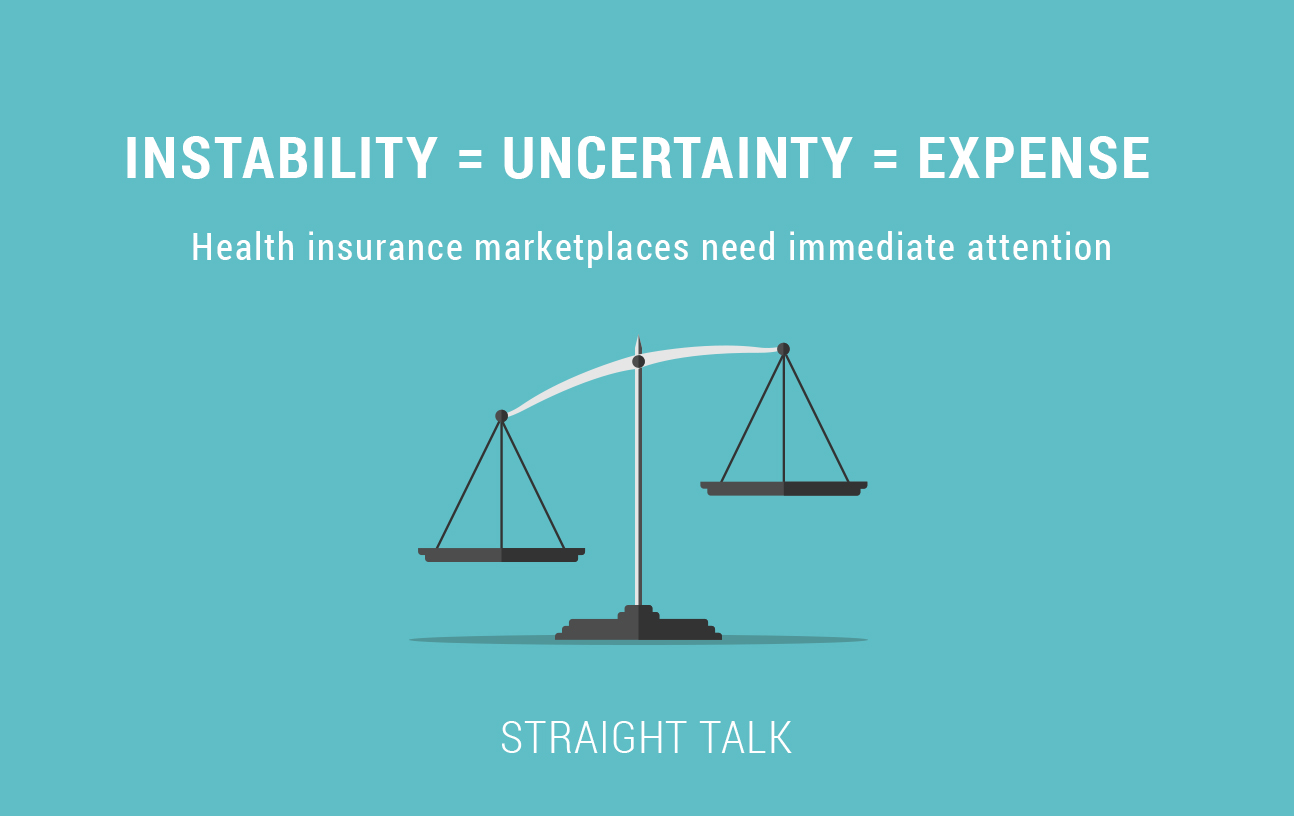One thing you learn if you work around insurance for a while is that instability and unpredictability drive everybody’s costs up. A lot. And it turns out it doesn’t matter if that’s car insurance, homeowners insurance, life insurance or health insurance.
We’ve Seen This Before
I was training with a major life insurance carrier in the mid-1980s when the AIDs epidemic began to be fully understood. At that time, based on the data and the projected impact on death rates, life insurance executives were seriously wondering if their industry would go away. Because AIDS data was scarce and what we did know seemed scary, they thought offering life insurance would simply get too expensive.
Rates jumped up a lot, and investment stumbled. Nobody knew what was really going to happen, and right in the middle of it, the stock market crashed in1987. A lot of carriers got absorbed into other carriers. Bad times all around. Lots of people lost their life insurance coverage.
And We’re Seeing It Now
Today, something similar is happening in the individual health insurance markets created by the Affordable Care Act (ACA). As of this writing, one-third of the counties/parishes in the United States only have one insurance carrier on their exchange. Two-thirds of the counties have two or less. Why prices are shooting up and the markets are threatened is a long story, but here on Straight Talk, we specialize in making long stories simple and easy to understand.
So here we go:
The ACA created a new individual market for health insurance with a previously unheard-of feature: Everybody gets in, no matter what their health status, no questions asked, at the exact same price. This has never happened before in the individual market because it can only work under very, very specific conditions. What are those?
The Four Keys to Stability and Lower Rates
To achieve stability and lower rates, we need a risk pool that is:
- diverse,
- economically sound (lots of people who can pay in WITHOUT drawing out large amounts of money for care),
- long-lasting, and
The more, the better! And, the more in, the cheaper everyone’s rates will be. Now, let’s talk about what that ideal risk pool looks like and what our reality is.
Does the Risk Pool = Population?
- Diverse—the most balanced risk pools look like the population those customers live in. Louisiana is 51% female and, on average, 34 years old. The perfectly balanced Louisiana risk pool should look the same way.
Reality?—The current Blue Cross risk pool has an average age of 44 years and is 57% female.
What Is Driving Young People Away?
- Economically Sound—the sustainable, affordable risk pool needs members to pay premiums that mirror their age group’s health spending. If I’m 64 years old and my fellow 64-year-olds are using seven times as much healthcare as the average 21-year-old, then I should be paying about seven times more in premiums. This allows younger people, who are generally less well off financially, to participate. .
Reality?—The ACA says at most, the oldest member of a population can pay only three times as much as the youngest member. This means the 21-year-old would have to pay 75% too much for his coverage so the 64-year-old can get a break on his rates. It’s a zero-sum game. We’ve lobbied to fix this for years. No help from D.C. on this.
Why Don’t People Sign Up and Stay?
- Long-Lasting—Before the ACA, we had 120,000 great, well-served, loyal customers in our individual block. On average, they stayed with us just short of four years, which made the market so predictable that rate increases were almost always single-digit numbers.
Reality?—The ACA design and enforcement discourage any stability or longevity in the risk pools at all, driving costs way up. Because of these weaknesses in the ACA, 40% of the people who bought coverage in 2015 kept it for FEWER THAN 12 CONTINUOUS MONTHS. 40%. That means 60% of the 11 million people or so who signed up on healthcare.gov that year were potentially gaming the system. How feeble a system it must be! And unstable.
How is this possible? Specifically:
- The original ACA design only allowed people to buy insurance during an Open Enrollment period two or three months per year, unless they had a life change (got married, had a baby, lost a job, etc.) and needed special enrollment. Poor enforcement and a lack of interest by federal agencies has allowed people to gain coverage after they get sick, wrecking the finances of the risk pool.
- Grace periods allow people to go up to 90 days without paying a premium before their coverage is terminated. Before the ACA, it was 30 days. Healthcare.gov encourages members to re-shop their coverage every 12 months, so huge numbers of people are now paying nine months of premiums and gaining 12 months of coverage. They can even get out of paying what they owe their previous health plans by jumping to a new one every year. Is it any wonder there is one insurance company in thousands of counties now?
- When we set rates, the Feds insisted that we include a factor called “risk adjustment.” This is a formula that moves money from plans with lots of healthier people to the plans with lots of sicker folks to level the playing field on paying for healthcare. The formulas are messy and elaborate, and I won’t bore you with the details.The key thing to note is that these formulas are set about a year in advance, and health insurance companies set premiums about 9 months in advance of the coming year’s enrollment/renewal period. Now, Congress is trying to snatch away some of that money before it ever gets to the carriers – many of whom are already operating at a loss — and their members who need it. This is changing the rules at the last minute, and forces yet more pressure on making your rates go up.
They Changed the Rules Again?
- Predictable—Because rates have to be set and expenses estimated more than a year before those plans go up for sale on healthcare.gov, the risk pool must have firm rules and assumptions that will make it predictable. Every time tweaks are thrown at carriers, costs go up and interest in selling insurance to that group of folks goes down.Imagine what’s going on right now at your health insurance company’s headquarters, as the new administration is debating how to “repeal and replace” the system that basically controls your health insurance rates?
Reality?—There is a ton of concern and worry here, because the D.C. shenanigans are making our mission “to improve the health and lives of all Louisianians” much, much harder. Changing the rules every few months makes it impossible to build a stable risk pool. Unstable pools drive costs and rates up, and satisfaction and coverage down. As we’ve stated already, there’s plenty of uncertainty to go around. And it’s all very expensive for you.
Reality #2?—The government must continue to fund Cost Sharing Reductions, or 6 million people will lose their ability to use their coverage. 130,000 of these people are your friends and neighbors right here in Louisiana. I wrote more about that here.
The really sad thing to me is, all of these things are fixable, but so far, the political will to do it hasn’t been there.
We have a talented team of people here who continue to send this message to Washington, D.C., because we want YOU to have affordable, useful, meaningful and stable coverage. We had limited success with the outgoing administration, and it remains to be seen what will happen in the new administration. But, we will not stop fighting for your interests, because as a member-owned, not-for-profit company, it’s our mission and obligation to you, our members. Remember, it’s your money.
Whew! That’s a lot of Straight Talk for one day. Best Wishes for this New Year to all of you and your family and friends!





The article is quite informative and provides good insight into the risk pools and various other factors impacting the rates. Thank you, Mark.